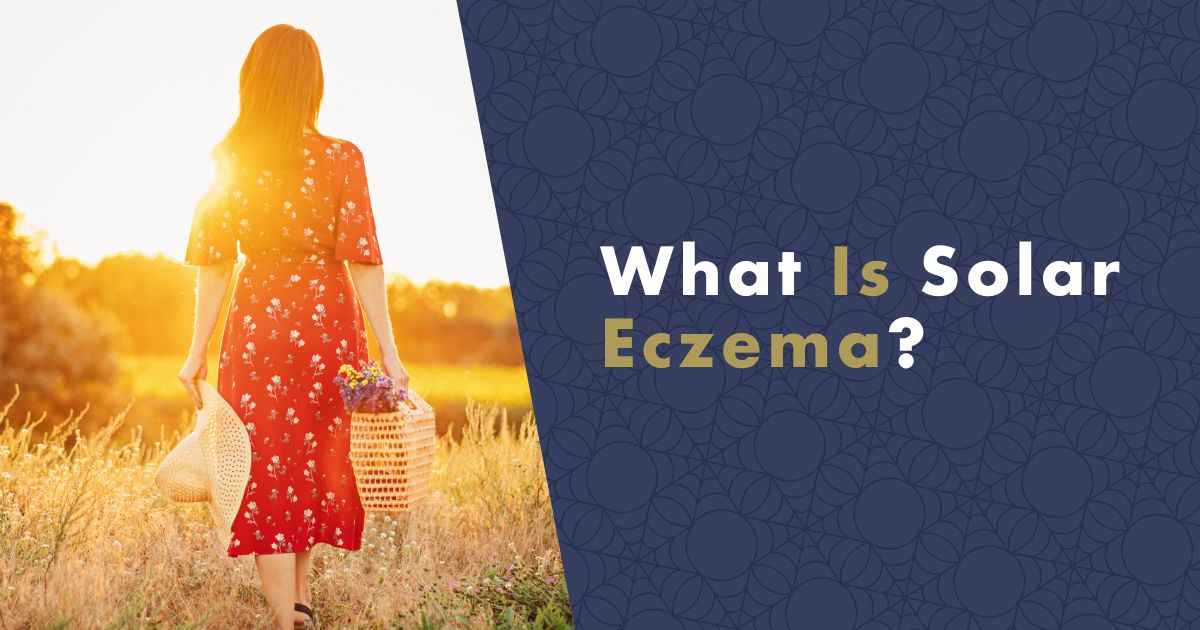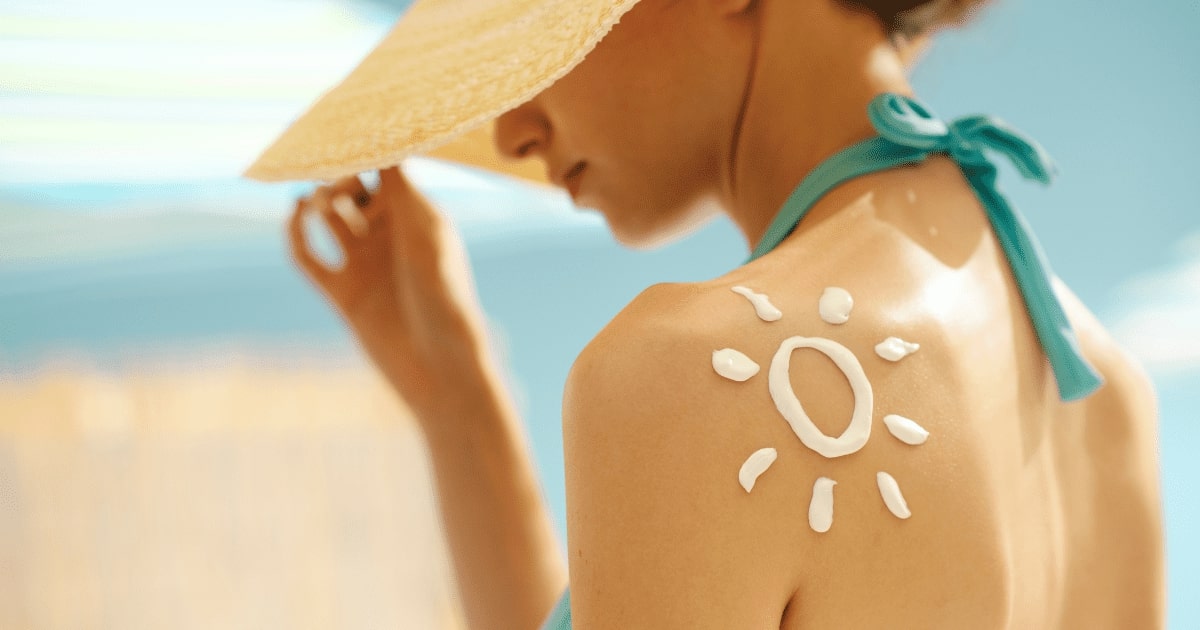Solar Dermatitis (also referred to as Sun Eczema, Eczema Solare) or Mild Solar Urticaria, is a skin condition that arises due to short or prolonged exposure to sunlight. The effects of this condition can range from mild irritation to severe inflammatory responses, causing discomfort and skin issues. Understanding the causes, symptoms, and available treatments for Solar Dermatitis is essential in managing and mitigating its impact on affected individuals. This article delves into the nuances of Solar Dermatitis, shedding light on its various aspects to provide comprehensive insights into this particular form of skin inflammation triggered by sunlight exposure.

Unveiling the Mystery of PLE: Decoding the Abbreviation
Chances are you may not have heard of this common abbreviation - PLE, which stands for Polymorphic Light Eruption or Sun Allergy. It is a skin condition that typically occurs suddenly in the spring or at the beginning of summer, or during a winter holiday in the mountains after intense sun exposure, when pale skin is not accustomed to sunlight. Unlike sunburn, PLE is actually an allergic reaction to sunlight, and it is not contagious nor does it cause cancer. However, it can be a bothersome skin problem.
The symptoms of PLE include redness of the skin, accompanied by itchy pimples or spots that may be painful. These eruptions most commonly appear on the décolletage, arms, or face - areas that are not accustomed to prolonged sun exposure after a long winter. It's worth noting that UVA radiation, which is responsible for PLE, can pass through glass, meaning that even sitting inside a car with exposed skin can trigger this condition.
It's important to understand that sunlight consists of various types of radiation, including UVA and UVB, which are not visible to the naked eye. While UVB causes sunburn, UVA is responsible for solar eczema. PLE is a result of an allergic reaction to UVA radiation, leading to the characteristic symptoms on the skin. Despite its discomfort, PLE is not a serious condition and can be managed with appropriate measures such as avoiding prolonged sun exposure, using sunscreens with high UVA protection, and covering up with protective clothing. If you suspect you may have PLE, it's best to consult a dermatologist for proper diagnosis and treatment.
TIP: How to care for the skin in winter
Who is Most Prone to Solar Eczema?
Contrary to common belief, polymorphic light eruption can also affect individuals with darker skin tones, and it's not limited to those with pale skin who have difficulty tanning. Sun eczema, a type of polymorphic light eruption, has been on the rise and now affects approximately 10 to 20 percent of the population. It is most commonly observed in young women and teenage girls with light and sensitive skin, but it can affect individuals of any skin color.

In the past, sun allergies were commonly associated with being at the beach, but nowadays they can occur even in inland areas. This is due to the heightened intensity of solar radiation caused by the depletion of the ozone layer, which acts as a natural shield.
What Are the Different Forms of Solar Allergies?
- Acne Aestivalis or Mallorca Acne: This form of sun allergy, which primarily affects women aged 25 to 40, is triggered by exposure to UV radiation combined with certain cosmetics, including tanning products. It may also coincide with classic acne symptoms or resemble polymorphic light eruption.
- Photoreaction: Some drugs, perfumes, toilet waters, or ointments containing keprofen can cause a photoreaction, resulting in an itchy rash when exposed to sunlight.
- Berloqu's Dermatitis: Contact with bergamot oil found in certain perfumes or wet wipes, followed by sunlight exposure, can darken the skin due to increased pigment cell production, leading to Berloqu's Dermatitis.
Top Strategies to Prevent Solar Dermatitis
- Limit sun exposure during rash: Avoid worsening sun allergies by reducing exposure to sunlight when experiencing a rash.
- Quality sunscreens: Use sunscreens like naturetics butter, which is gentle on sensitive skin and free of harmful chemicals such as parabens and microplastics. It contains a UV filter that doesn't penetrate the skin.
- Skin regeneration: After sun exposure, soothe and hydrate the skin with after-sun milk containing panthenol, aloe vera, and vitamin E. Almond and coconut oil can help soften the skin, while prolonging the tan.
TIP: Aloe vera: a natural miracle with beneficial effects on the skin
#produkty#https://www.nanospace.store/sunscreen/
- Gradual sun exposure: Allow your skin to gradually acclimate to sunlight in early spring and summer, using high-quality sunscreen to protect against sun rash.
- Nutrient support: Prior to planning a beach or mountain vacation, or even for everyday use in sun-prone areas, consider consuming vitamins and minerals such as calcium, selenium, zinc, vitamin C and E, and beta-carotene to support your body. These nutrients may help alleviate solar eczema symptoms.
Effective Strategies for Treating Sun Eczema: Expert Tips for Relief and Recovery
- Most cases resolve naturally: Sun allergies typically resolve within a week without medical intervention.
- Anti-itch remedies: Use non-prescription options like anti-itch powder or liquid to alleviate discomfort from itching. Over-the-counter antihistamines can also provide relief.
- Avoid scratching: To prevent skin infection, refrain from scratching the affected area, and follow proper skin care practices to promote healing.
Tip: Read the article, best natural sunscreen: How to choose.
Managing Severe Sun Allergies: Working with a Doctor and Home Remedies for Relief
Medical intervention for severe cases: In severe cases, a doctor may prescribe corticosteroids to help treat sun allergies.
Home remedies for mild cases: For milder cases, home remedies can be effective. Cold compresses, cold water showers, or compresses made from unsweetened black tea can help alleviate symptoms. Aloe vera is also known for its soothing properties.
Avoid irritating products: Refrain from using irritating cosmetic products, such as soap or shower gel, on the affected area. Wash with lukewarm water instead.
#produkty#https://www.nanospace.store/search/?string=immunity+c
Consider vitamin supplements: Vitamin C or zinc supplements, such as Immunity complex or Immunity complex kids, may support the body's defenses and help manage sun allergies.
Symptom management: While sun allergies cannot be cured completely, appropriate remedies and care can help reduce symptoms and provide relief.
Sources
- D'Souza, P., Rathi, S. K., & Kumari, R. (2019). Sunscreens in the management of photodermatoses. Indian journal of dermatology, 64(5), 345-352.
- Gulati, R., Thyssen, J. P., et al. (2016). Photoallergic contact dermatitis. Dermatitis, 27(1), 7-19.
- Lim, H. W., Cooper, K. D., et al. (2011). Solar urticaria. Journal of the American Academy of Dermatology, 64(2), 369-374.
- Mauerer, M., Eyerich, K., & Eyerich, S. (2013). The diagnosis and treatment of acute and chronic urticaria: 2014 update. Deutsches Ärzteblatt International, 110(24), 419-426.
- Mezzana, P., Rongioletti, F., et al. (2016). Solar urticaria: Clinical and photoallergologic features in 45 cases. Journal of the American Academy of Dermatology, 74(3), 556-562.
- Nguyen, H. P., & Lim, H. W. (2013). Solar urticaria. Current allergy and asthma reports, 13(3), 322-329.
- O'Neil, B., & Fleischer, A. B. (2010). Solar urticaria: pathogenesis, diagnosis, and management. Journal of the American Academy of Dermatology, 62(4), 685-692.
- Rothbaum, R., McGowan, M. A., & Paller, A. S. (1994). Acute sunburn dermatitis from an autoerotic photoallergic reaction. Cutis, 54(1), 33-34.
- Sigurdsson, V., & Aarskog, D. (1992). Solar urticaria in children. Pediatric dermatology, 9(2), 111-113.
- Sun, L., & McCalmont, T. H. (2007). Photosensitivity in lupus erythematosus and solar urticaria. Clinics in dermatology, 25(3), 331-334.
- Wirnsberger, R. M., Weichenthal, M., & Leiter, U. (2017). Photoprotection in solar urticaria. Journal of the European Academy of Dermatology and Venereology, 31(S4), 7-10.
- Adkinson, N. F., & Bochner, B. S. (2014). Middleton's allergy: principles and practice. Elsevier Health Sciences.
- Akdis, C. A. (2016). Global atlas of allergic rhinitis and chronic rhinosinusitis. European Academy of Allergy and Clinical Immunology.
- Bolognia, J. L., Schaffer, J. V., & Cerroni, L. (Eds.). (2017). Dermatology E-Book. Elsevier Health Sciences.
- Chakrabarty, S., & Kavita, K. (2014). Manual of allergy and immunology. JP Medical Ltd.
- Holgate, S. T., Church, M. K., Broide, D. H., Martinez, F. D. (2011). Allergy. Elsevier Health Sciences.


